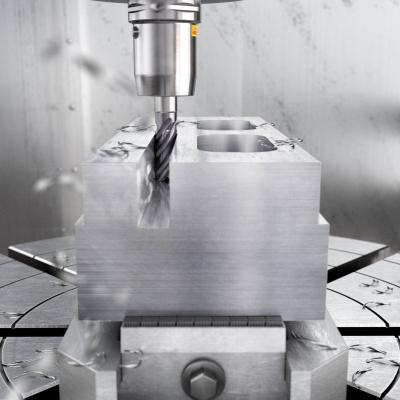
Cutting tool specialist Sandvik Coromant is expanding its offering of CoroMill® Plura HD solid end mills for heavy-duty roughing in steel and stainless steel with two new grades. This new generation of grades features the unique Zertivo™ 2.0 coating, which combines world-class productivity with an exceptional metal removal rate and the highest possible process security.
CoroMill Plura HD is Sandvik Coromant’s first-choice optimized solution for heavy-duty applications up to 2×D in steel and stainless steel (ISO P and ISO M), offering safe and efficient solid end milling. The new Zertivo 2.0-coated grade further improves tool life, process security and productivity.
“With Zertivo 2.0, we are applying our comprehensive knowledge in coating technologies to our solid round tools,” says Antti Wikström, Global Product Manager, Solid End Mills, at Sandvik Coromant. “This gives us an opportunity to offer unique, custom-made coatings that can handle our customers’ machining challenges with superior performance and tooling efficiency.”
The new grades enable a 30 percent increase in cutting speed recommendations for the primary ISO P and ISO M application areas, as well as secondary ISO K and ISO S materials, thanks to their optimized flute shape, which offers effective chip evacuation. The grades designed for stainless steel machining come in two variants: one with internal coolant for improved temperature control and chip flow, and one without internal coolant.
The standard assortment offers diameters from 2–25 mm, a 2×D depth of cut, 4 to 5 teeth and a ramping angle of 5° or 7°. Tailor Made® options are available within the Customized Solutions range.
Contact Details
Related Glossary Terms
- coolant
coolant
Fluid that reduces temperature buildup at the tool/workpiece interface during machining. Normally takes the form of a liquid such as soluble or chemical mixtures (semisynthetic, synthetic) but can be pressurized air or other gas. Because of water’s ability to absorb great quantities of heat, it is widely used as a coolant and vehicle for various cutting compounds, with the water-to-compound ratio varying with the machining task. See cutting fluid; semisynthetic cutting fluid; soluble-oil cutting fluid; synthetic cutting fluid.
- cutting speed
cutting speed
Tangential velocity on the surface of the tool or workpiece at the cutting interface. The formula for cutting speed (sfm) is tool diameter 5 0.26 5 spindle speed (rpm). The formula for feed per tooth (fpt) is table feed (ipm)/number of flutes/spindle speed (rpm). The formula for spindle speed (rpm) is cutting speed (sfm) 5 3.82/tool diameter. The formula for table feed (ipm) is feed per tooth (ftp) 5 number of tool flutes 5 spindle speed (rpm).
- depth of cut
depth of cut
Distance between the bottom of the cut and the uncut surface of the workpiece, measured in a direction at right angles to the machined surface of the workpiece.
- gang cutting ( milling)
gang cutting ( milling)
Machining with several cutters mounted on a single arbor, generally for simultaneous cutting.
- milling
milling
Machining operation in which metal or other material is removed by applying power to a rotating cutter. In vertical milling, the cutting tool is mounted vertically on the spindle. In horizontal milling, the cutting tool is mounted horizontally, either directly on the spindle or on an arbor. Horizontal milling is further broken down into conventional milling, where the cutter rotates opposite the direction of feed, or “up” into the workpiece; and climb milling, where the cutter rotates in the direction of feed, or “down” into the workpiece. Milling operations include plane or surface milling, endmilling, facemilling, angle milling, form milling and profiling.

